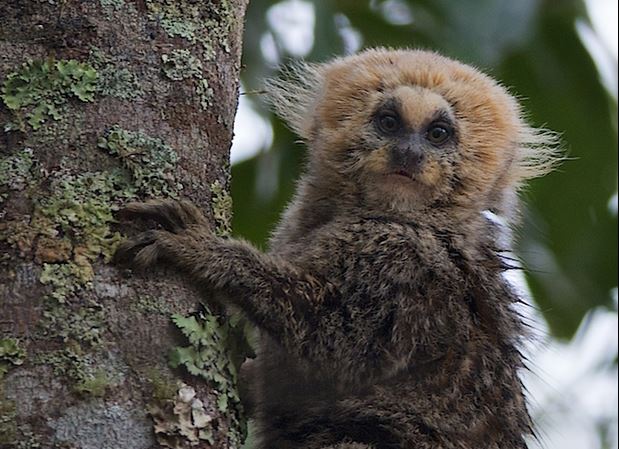
With black smudge marks around its eyes and hair sticking out of its head sideways, the buffy-headed marmoset has all the appearances of a circus clown. Goofy looking for sure, but cute as hell.
Unfortunately, unlike its appearance, the status of the monkey is far less amusing – namely because the primate is nearing extinction.
The IUCN recently added the buffy-headed marmoset to its endangered “Red List,” estimating that there are probably no more than 2,500 that remain in the wild. The issues that threaten them are varied, but among them include:
- Diminished habitat – the Atlantic Forest which is home to the marmosets, or Mata Atlántica in Portuguese, has diminished in size through the centuries. Since the Portuguese came in the 16th century, the forest has succumbed to massive urbanization and now houses some of Brazil’s biggest cities.
- Hybrid problems – The release into the wild of certain other marmoset “pets,” such as common marmosets (Callithrix jacchus) and black-tufted-ear marmosets (Callithrix penicillata) has led to new hybrid species that are changing the gene pool and taking over the habitat of the pure breed buffy-headed marmosets.
- Yellow fever – When it hit the region in 2016, yellow fever took its toll on a number of primates in the Atlantic Forest in Brazil. In one private reserve that housed around 200 marmosets, the yellow fever likely decimated them all.
So what to do to rescue them? The publication Mongabay gives a couple suggestions.
First, identify and create “safe haven” sites where they can dwell safely, and then establish numerous controls to attempt to keep any invasive species out. If these monitored sites are in a public forest, the wildlife officials will need to make agreements with the government, and if on private lands, then with landowners.
Second, undertake captive breeding. Currently there are no buffy-headed marmosets in a captive-breeding program, but with minimal funding from the government or private foundations that could change. If such a program were initiated, it would leave options open for rewilding in the future.
One thing is for sure, notes Mongabay, “the buffy-headed marmoset is at a stage where it requires human action in order to survive at all. It doesn’t need humans to just leave it alone — a conservation tactic that has worked for many species in the past. It needs humans to intervene. It needs us to act. Will we? Or has the sad clown begun its last act?”
To read more, check out the full story at Mongabay here.
* This article was originally published here
HELP STOP THE SPREAD OF FAKE NEWS!
SHARE our articles and like our Facebook page and follow us on Twitter!






0 Comments